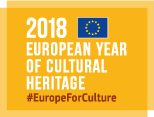InnovaConcrete - Multifunctional treatments for historic concrete conservation
Challenge: WHY the innovation has been developed? What problem is addressed and why has not been not solved before?
20th Century concrete-based structures have been designed and built in a time when no particular care was given to critical parameters increasing their long-performance, such as the water to cement ratio and the thickness of the concrete layer, because decay mechanisms were still largely unknown. Thus, historic concretes often present low durability. So far, research on Cultural Heritage materials conservation have largely addressed traditional materials, whereas little focus has been given to concrete preservation or the application of nanoscience and advanced materials for this aim.
Solution: WHAT the solution is about? HOW it goes beyond the state of the art?
The InnovaConcrete project is developing advanced materials and techniques specifically designed for concrete heritage preservation. Products and techniques encompass the development of multifunctional impregnation treatments (with improved super-hydrophobic performance, and able to produce calcium silicate hydrates), cementitious coatings containing inorganic nanotubes, portable atmospheric plasma devices and self-healing impregnation treatments. Such technologies are based on multiscale modelling and are validated in relevant environment.
End-users and examples of uses: WHO will beneficiate/ is beneficiating from the solution? WHERE and HOW the solution has been adopted? How will impact people or end-users? Add as more as possible examples of market and society uptakes
Such products will be essential for the work of restorers and conservators, but also represent an interesting market opportunity for protection and conservation of current concrete. In addition, it can be interesting for companies involved in waterproofing of natural and artificial materials. Moreover, a set of awareness-raising tools are under development, aiming at highlighting the relevance of 20th century cultural assets. Such tools include identification badges of significant concrete based Cultural Interest Assets, user-friendly web interface 3D-monuments reconstruction, a guidance to conserve and manage historic concrete, a decision making tool for concrete conservation and an Ecosystem Services approach methodology to assess the value of Cultural Heritage.
Media coverage
http://www.innovaconcrete.eu/press-release/
References for more information (eg. website, social media)
Contacts:
Maria J. Mosquera (ic@innovaconcrete.net)
Application sectors:
- Historical sites
- Eco-systemic services
- Restoration and conservation of CH
Objectives:
- Market/business development
- Consumers’ awareness and information, trust building
- Knowledge sharing and education
RRI Dimensions:
- Public Engagement
- Science Education
- Open Access
Communities:
- Advanced future technologies for heritage and arts

